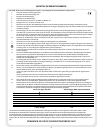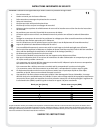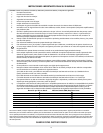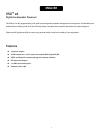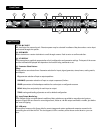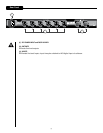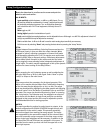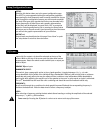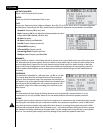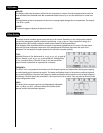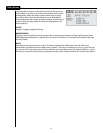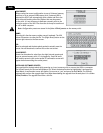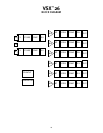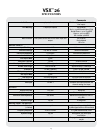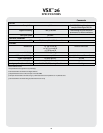
12
Select 1-6 on the top of the EQ screen.
Select any of the five independent filters to use.
Choices are: Parametric, Notch, Allpass1, Allpass2, Horn EQ, LPF-6, LPF-12, HPF-6, HPF-12, Low Shelf, High Shelf
and Bandpass. Depending on the filter selected various options for adjustment are presented in the window.
Frequency, BW (in oct), Level
Frequency, BW (in oct). Notch has a fixed attenuation on minus
infinity and the BW is defined 3 dB from unity.
Frequency
Frequency and Bandwidth
Turnover Frequency and Level
Frequency
Frequency and Q
Frequency and Level
Center Frequency and Bandwidth
Inputs A and B or outputs 1-6 should be selected on the top of the screen. While on the top of the screen push
the data wheel and an arrow appears. Rotate the wheel to select which input or output you wish to adjust and
press the data wheel. Dynamics in the input channels may be linked in pairs for stereo tracking on the Input
pages on the Setup/Configuration screen. Most users should use the dynamics on the outputs as Limiters to
protect speakers and amplifiers and as compressors on the inputs should this type of tonal modification be
necessary.
The threshold is adjustable in .5 dB steps from –76 dBu to +24 dBu.
This control determines the minimum level when the compressor
begins to limit the dynamic range. The compressor has no affect on
the signal as long as the signal strength is below the threshold point.
Once it passes the threshold point, the compressor begins to limit
the dynamic range of the output according to the value set by the
Ratio control.
The ratio determines how strong the limiting becomes once the threshold is crossed. Values of 1:1 (no
compression) to 20:1 are possible. Ratios of 10:1 and above should be selected for speaker protection.
The attack function sets the amount of time for the compressor to respond once the threshold has been crossed.
Specifying this value allows the user to determine whether the compressor responds as a peak or RMS unit as
very short attack times consider only peaks while times above 50 ms average these peaks and result in RMS
response. We recommend attack times of between 50 ms - 100 ms be used when setting the limiters to protect
the speakers from being overdriven by the power amps. It is the average power long term that causes speaker
burn out. The transient peaks usually cause little damage if kept inside the speaker’s band limits.



